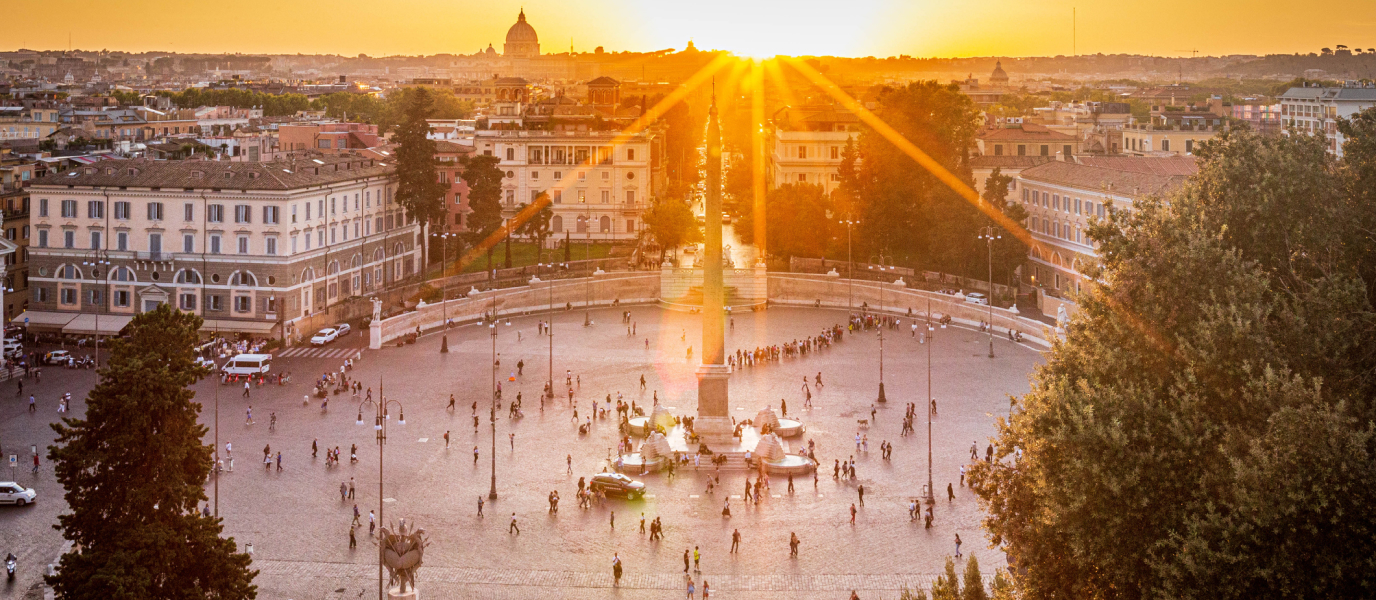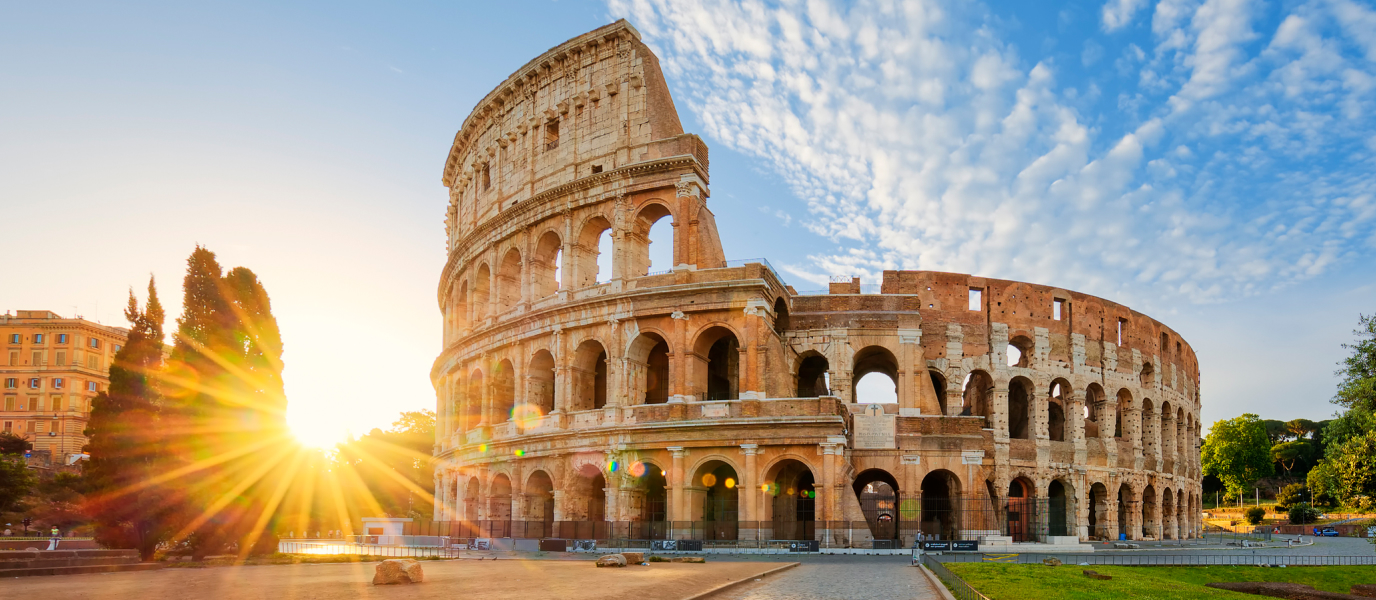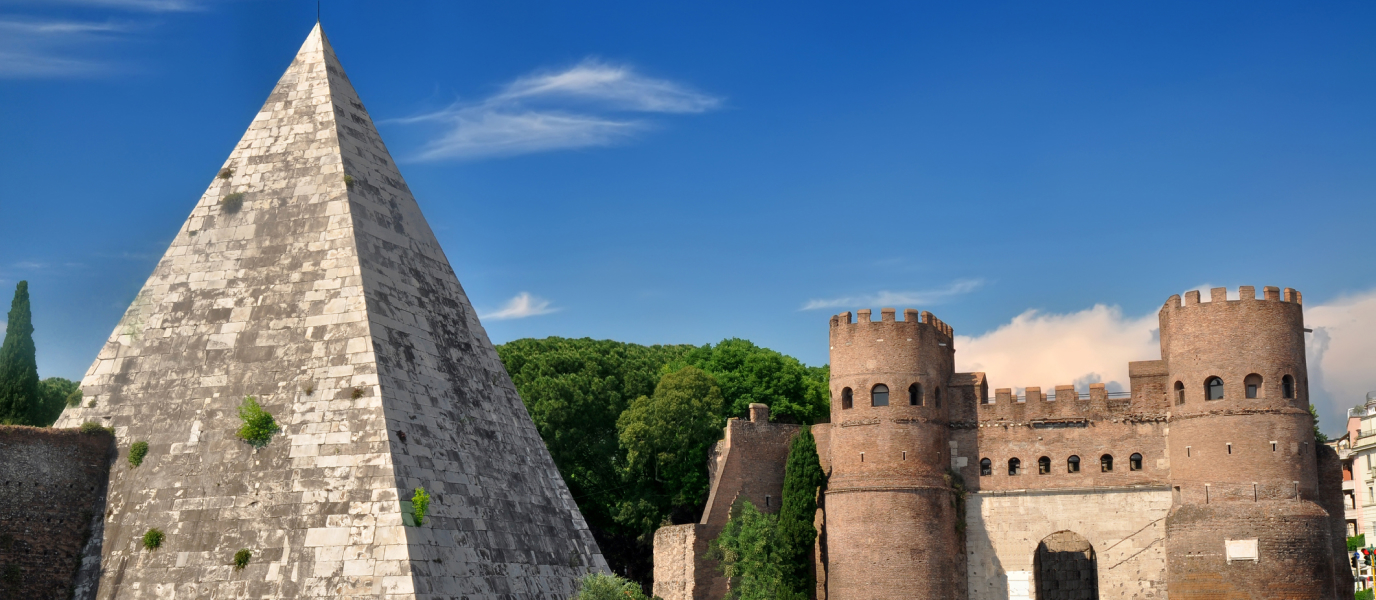Rome’s monumental northern gateway, the vast Piazza del Popolo, is entirely representative of The Eternal City. It has drama, legend, plenty of history, and a clash of styles bringing together more than three thousand years of artistic tradition.
Despite this rich heritage, many of the features around this elegant open space go unnoticed at first glance. Let’s start with the eponymous church: Santa Maria del Popolo, a jewel of the Renaissance housing some genuine artistic treasures. It’s often sidelined by its famous neighbours at the south of the piazza: the two Marias, or Santa Maria dei Miracoli and Santa Maria in Montesanto. Via di Ripetta, Via del Corso and Via del Babuino – three streets which pour into the heart of Rome – all leave from the churches.
Read on to discover some of the lesser-known features of a piazza which is one of Rome’s most beloved public spaces.
Piazza del Popolo throughout history
As you’d expect from a place with a history spanning 28 centuries, what is now the Piazza del Popolo has experienced many ups and downs. Let’s take a look at some key events.
Ancient Rome
The piazza lies at the former site of the ancient gate called the Porta Flaminia, now named the Porta del Popolo. The gate marked the start of Via Flaminia, a road dating back to 220 BC and built by the Roman Republic to unite the city with the Adriatic coast. Porta Flaminia was flanked on either side by the Aureliana wall, built by Emperor Aurelian in the 3rd century AD to defend the city from Barbarian invasions. The mausoleum housing the grave of Nero (Rome’s fifth emperor) lay where Santa Maria del Popolo now stands.
The Middle Ages and the Renaissance
The first chapel was built over the tombs of the Domiti family in 1099, at the place where Santa Maria del Popolo would later be raised. Legend says that the church was built to exorcise the ghost of Emperor Nero, which was said to visit evil on the place.
In the mid-15th century, now the height of the Renaissance, Pope Sixtus IV ordered that the church of Santa Maria del Popolo be reconstructed. It subsequently became the interment site of choice for noble Roman families who wanted to be laid to rest in chapels designed by best artists of the time.
The first plan for the piazza in 1538 sought to create a monumental access gate to the north of the city. Pope Pius IV entrusted the design of the Porta del Popolo to Michelangelo, though it was one of his acolytes who eventually created it in 1565.
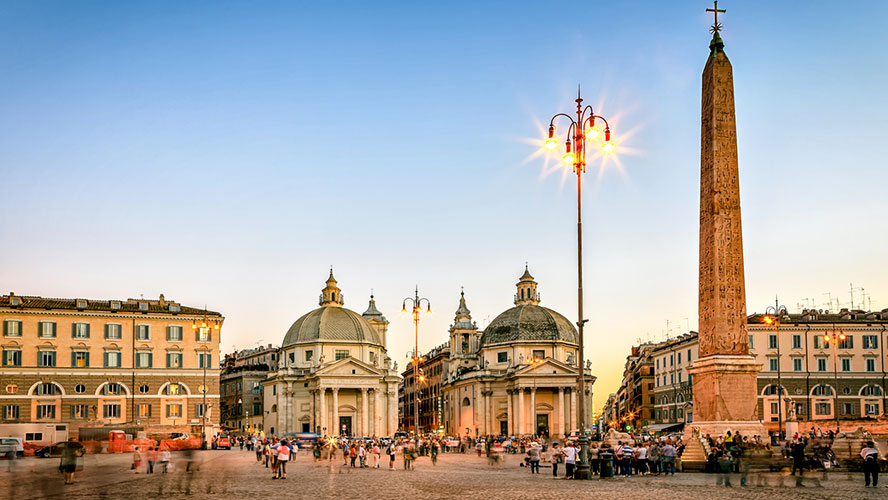
From the Baroque period to the present day
In the 17th century, Pope Alexander VII tasked the great Roman Baroque artist Bernini with decorating the interior facade of Porta del Popolo. The ‘twin’ churches of Santa Maria dei Miracoli and Santa Maria in Montesanto were designed first by Carlo Rainaldi before Bernini reviewed the plans, and the project was eventually completed by Carlo Fontana.
It’s hard to imagine that, back in the 18th and 19th centuries, such an elegant and beautiful place was used for public executions and bloody riderless horse races. The last major remodelling of the piazza took place during the Neoclassical period, around the same time.
The piazza has since shed its superstitious and bloody past to become an important meeting place, concert venue and centre for political rallies. Romans love to take in the new year in Piazza del Popolo and the annual celebrations now attract up to 30,000 people.
What to see in Piazza del Popolo: Santa Maria del Popolo, the Flaminio Obelisk and more
Like most things in Rome, Piazza del Popolo has a vast array of valuable artistic features. Here are some of the best things to look out for.
Church of Santa Maria del Popolo
The church that lends the piazza its name is a jewel of Renaissance architecture. It houses genuine works of art but somehow remains in the shadow of other nearby monuments. Pilgrims once flocked to the first Medieval church to worship Christ’s sacred umbilical cord. Andrea Bregno and Pinturicchio designed the 15th-century structure and Bramante and Bernini subsequently made additions.
Among its treasures are frescoes by Pinturicchio in the Capilla della Rovere. The Capilla Cesari has two of the few remaining paintings by the master of dramatic illumination Caravaggio: The Crucifixion of Saint Peter and The Conversion of Saint Paul, both authentic masterpieces of Baroque painting. Raphael’s Capilla Chigi has important sculptures by Bernini.
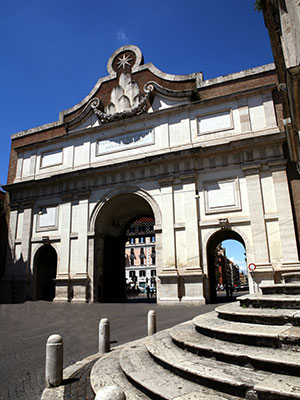
Porta del Popolo
The Porta del Popolo used to be the access gate to the city along Via Flaminia. It was built in the 16th century by Nanni di Baccio Bigio, a disciple of Michelangelo, by order of Pope Pius IV. It’s essentially a Roman triumphal arch with the statues of St Peter and St Paul front and side. The top bears the papal coat of arms.
The interior side of the gate was decorated a century later by Bernini in honour of Christina of Sweden’s visit to Rome. Visitors who wanted to enter the city through this gate were stuck in queues while their luggage was inspected, and a lucrative bribe system arose as a result.
Flaminio Obelisk
The obelisk in the centre of the piazza dates to the 14th century BC and bears inscriptions by Ramesses the Great. Carved from red Aswan granite, it originally stood in the Temple of Re in the ancient Egyptian city of Heliopolis. Obelisks in Ancient Egypt symbolised divine sunlight. This particular example was taken to Rome in 10 BC by order of Augustus and installed in the Circus Maximus (link: Circus Maximus). It was rediscovered in 1587 and Pope Sixtus V ordered that it be moved to its current location. At 23.3 metres, it’s one of Rome’s tallest obelisks, though the cross on the top takes the total height to 36.5 metres.
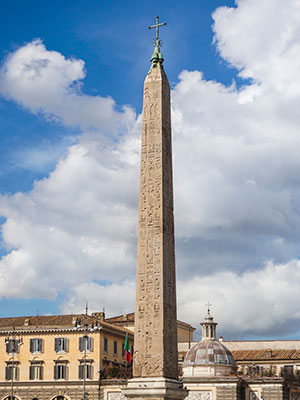
The ‘twin’ churches
Santa Maria dei Miracoli and Santa Maria in Montesanto are perhaps the most peculiar architectural features of Piazza del Popolo. They bring a touch of Baroque theatrics to the square. The churches sit at the south of the piazza and were designed by the architect Carlo Rainaldi before being completed in the late 18th century by Carlo Fontana.
At first glance they look like symmetrical churches. The plot on the left was narrower than the one on the right, so Rainaldi solved the problem by giving Santa Maria de Montesanto (on the left) an oval dome, while Santa Maria dei Miracoli has a circular dome. The resulting optical illusion led to the churches being dubbed ‘twins’.
Beautiful views of Rome from the Pincio Gardens
If you have time, take a walk to the gardens on Pincio Hill, to the east of Piazza del Popolo. You’ll be treated to spectacular panoramic views of the city from the main square in the gardens, Piazzale Napoleone.
The strange origins of the name Piazza del Popolo
The name of the piazza goes all the way back to the first church that was built there in 1099. Popolo (Italian for people), the name of the chapel dedicated to the Virgin, alludes to the fact that it was paid for by the people of Rome.
Another version tells of a black poplar that grew were Nero’s mausoleum once stood. The tree was cursed and sheltered ghosts that terrorised the local people. On the orders of Pope Paschal II, the tree was chopped down, Nero’s remains were thrown into the Tiber and the church was built. Poplar in Italian is pioppo. Changes in the language over the centuries may have led to the name popolo.
You decide which version you prefer!




































































